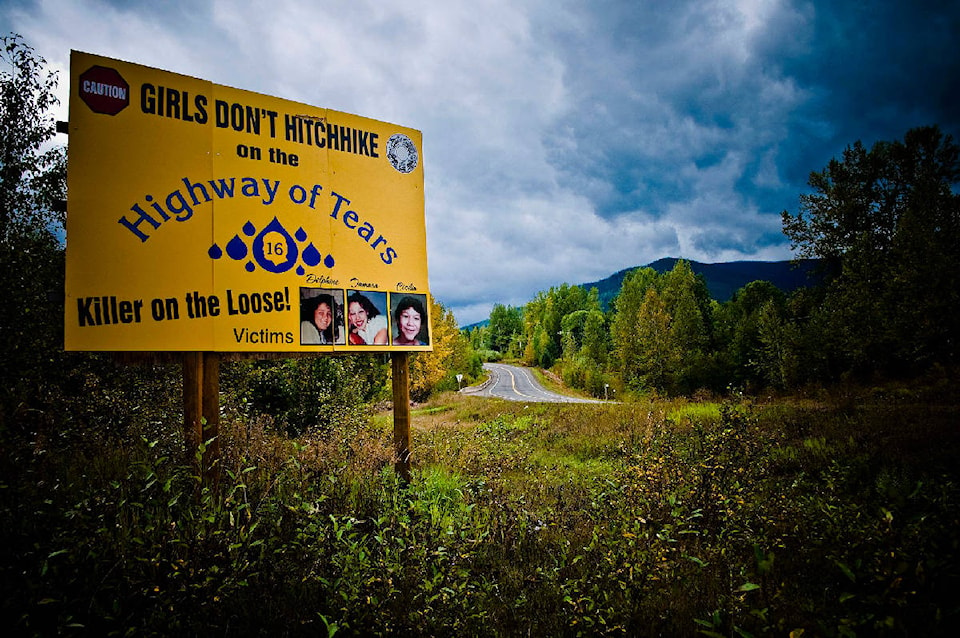British Columbia’s Highway 16 is a 781-kilometre stretch of pavement between Prince George and Prince Rupert.
It goes through some scenic country, but it has its share of road fatalities, especially during the winter when road conditions get dicey and moose wander out on the highway.
It’s also known as the Highway of Tears, and rightfully so.
It was named that after Indigenous Peoples brought to light a series of murders and disappearances of mainly Aboriginal women along that stretch of highway from 1969 until 2011.
There are 23 First Nations communities bordering the Highway of Tears. There was a genuine lack of public transportation and people turned to hitchhiking, including women and girls – and often alone.
RCMP list the number of Highway 16 victims at 19. Area First Nations groups estimate the number of missing (and likely murdered) women and girls in the 40s, which includes women who disappeared farther away from the highway than the area used by police.
Thirteen of the 19 victims were teenagers, and 10 of 19 were of Aboriginal descent – 19 wives, mothers and children!
Complaints from Indigenous Peoples were all but ignored in the beginning. That changed when the media picked up on the story and brought it to the general public’s attention.
Government wanted to study the situation to determine what would be the best course of action.
First Nations communities just wanted action.
As government officials were gathering and collating information, Aboriginal communities were shaking their heads. They already knew the solution – a cheap, reliable and safe transportation system.
Well, they finally got it, and it’s growing.
Feb. 2 marked the first anniversary of the Highway 16 Transportation Action Plan implementation, and 5,000 people have used B.C. Transit’s new, expanded transit service to travel between northern communities safely, reliably and affordably.
The first inter-community transit service for the Highway 16 routes started on Jan. 30, 2017, connecting Smithers and Moricetown in 30 minutes.
Since then, several other new inter-community routes have launched, connecting Burns Lake and Prince George, Burns Lake and Smithers, and Terrace and the Hazeltons. The one-way fee is either $2.75 or $5, depending on the route.
The new community-vehicle (van, mini-van, SUV, or a small bus) program has also been successful, with more than 9,000 passengers using the service since the summer.
Over 7,000 of these are from the shuttle service between Vanderhoof and the Saik’uz community, which carries an average 43 passengers a day.
The First Nations driver-education program has been successfully implemented; web cams and shelters are in place.
A simple solution for a huge problem.
Ken Alexander, Quesnel Cariboo Observer
